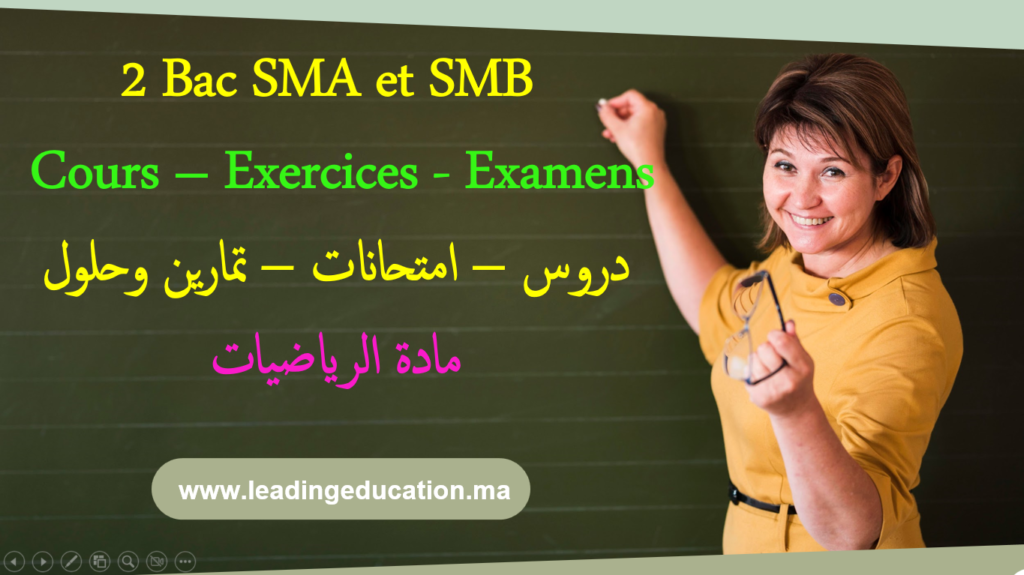Structures Algébriques
2ème BAC Sciences Mathématiques
1. Lois de Composition
a) Définition
\( \star : E \times E \to E \)
\( (a,b) \mapsto a \star b \)
b) Propriétés fondamentales
| Propriété | Définition |
|---|---|
| Associativité | \( \forall a,b,c \in E,\ (a\star b)\star c = a\star(b\star c) \) |
| Commutativité | \( \forall a,b \in E,\ a\star b = b\star a \) |
| Élément neutre | \( \exists e \in E,\ \forall a \in E,\ a\star e = e\star a = a \) |
| Symétrique | \( \forall a \in E,\ \exists a’ \in E,\ a\star a’ = a’\star a = e \) |
2. Structure de Groupe
a) Définition
1. La loi \( \star \) est associative
2. Il existe un élément neutre \( e \in G \)
3. Tout élément admet un symétrique dans \( G \)
Si de plus \( \star \) est commutative, on dit que \( G \) est un groupe abélien.
b) Exemples fondamentaux
3. Anneaux et Corps
a) Anneau
1. \( (A, +) \) est un groupe abélien
2. \( \times \) est associative et distributive sur \( + \)
3. Il existe un élément neutre pour \( \times \) (appelé unité)
Si \( \times \) est commutative, c’est un anneau commutatif.
b) Corps
1. \( K \) contient au moins deux éléments (0 ≠ 1)
2. Tout élément non nul est inversible pour \( \times \)
Si de plus \( \times \) est commutative, c’est un corps commutatif.
4. Sous-structures
a) Sous-groupe
Une partie \( H \subset G \) est un sous-groupe de \( (G, \star) \) si :
- L’élément neutre \( e \in H \)
- \( \forall x,y \in H,\ x \star y \in H \) (stabilité)
- \( \forall x \in H,\ x^{-1} \in H \) (fermeture par inverse)
Critère équivalent : \( H \neq \emptyset \) et \( \forall x,y \in H,\ x \star y^{-1} \in H \)
b) Morphismes de groupes
\( \forall x,y \in G,\ f(x \star y) = f(x) \bullet f(y) \)
Si \( f \) est bijective, c’est un isomorphisme.
5. Exercices d’Application
Exercice 1 : Montrer que \( (\mathbb{Z}, +) \) est un sous-groupe de \( (\mathbb{R}, +) \).
Solution :
- L’élément neutre \( 0 \in \mathbb{Z} \)
- Pour tout \( a, b \in \mathbb{Z} \), \( a + b \in \mathbb{Z} \) (stabilité)
- Pour tout \( a \in \mathbb{Z} \), \( -a \in \mathbb{Z} \) (symétrique)
Donc \( (\mathbb{Z}, +) \) est un sous-groupe de \( (\mathbb{R}, +) \).
Exercice 2 : L’ensemble \( U = \{ z \in \mathbb{C} \mid |z| = 1 \} \) est-il un groupe pour la multiplication ?
Solution : Oui, c’est le groupe du cercle unité.
- \( 1 \in U \) car \( |1| = 1 \)
- Si \( z_1, z_2 \in U \), alors \( |z_1 z_2| = |z_1||z_2| = 1 \Rightarrow z_1 z_2 \in U \)
- Si \( z \in U \), alors \( |z| = 1 \Rightarrow \left|\frac{1}{z}\right| = \frac{1}{|z|} = 1 \Rightarrow z^{-1} \in U \)
La multiplication est associative et commutative → \( (U, \times) \) est un groupe abélien.
Exercice 3 : Montrer que \( f : (\mathbb{R}, +) \to (\mathbb{R}_+^*, \times) \) définie par \( f(x) = e^x \) est un isomorphisme.
Solution :
- Morphisme : \( f(a + b) = e^{a+b} = e^a \cdot e^b = f(a) \times f(b) \)
- Injectivité : \( f(a) = f(b) \Rightarrow e^a = e^b \Rightarrow a = b \)
- Surjectivité : Pour tout \( y > 0 \), il existe \( x = \ln y \) tel que \( f(x) = y \)
Donc \( f \) est un isomorphisme de groupes. Cela montre que \( (\mathbb{R}, +) \cong (\mathbb{R}_+^*, \times) \).




Pingback: مادة الرياضيات شعبة العلوم الرياضية ـ ب ـ السنة الثانية بكالوريا 2Bac SMB – موقع التعليم الرائد